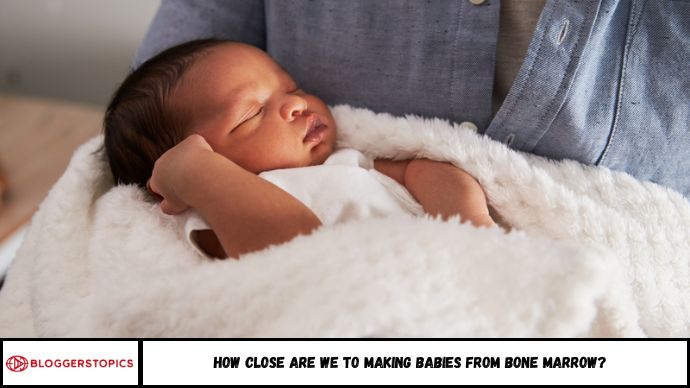Babies from bone marrow may sound like science fiction, but stem cell research is pushing this concept closer to reality. Scientists are exploring how bone marrow stem cells could one day create egg or sperm cells, offering revolutionary fertility solutions. This article explains where the science currently stands, what challenges remain, and how close we really are to this potential breakthrough in human reproduction.
Back in 2007, a team of scientists made headlines with a bold claim: they had created sperm-like cells from stem cells found in the bone marrow of human men. The announcement sparked excitement—and controversy. Just two years later, the study was retracted over plagiarism concerns. Since then, the dream of producing functional human sperm from stem cells has remained just out of reach.
For decades, researchers have been working to figure out how to create fully functional human gametes—eggs and sperm—from stem cells. According to Dr. Vittorio Sebastiano, a reproductive biologist at Stanford University, this breakthrough could transform fertility treatment and deepen our understanding of early human development.
In the years since that controversial 2007 study, scientists have made steady progress. They’ve created viable sperm and eggs in mice and even generated immature human egg cells in the lab. But turning adult cells like skin or bone marrow into fully capable human reproductive cells remains one of biology’s most complex challenges.
“We’re trying to develop reliable methods to generate germ cells,” says Sebastiano, “not only to study the biology of reproduction, but also to eventually restore fertility in people who have lost it.”
Could Babies Be Made from Bone Marrow? Science Is Getting Closer
In 2007, a stunning experiment suggested a future where babies could be made from bone marrow, not just sperm and eggs. Since then, this bold idea has captured attention—and stirred controversy. Could this innovation solve infertility? Allow same-sex couples to have biological children? Or even let a woman conceive using only her own cells?
In this article, we’ll explore:
- The science behind bone marrow and reproduction
- How far researchers have come since the first studies
- Who could benefit from this technology
- Ethical, biological, and technical challenges ahead
- What still needs to happen before this becomes a reality
Understanding the Concept: Babies from Bone Marrow
What’s the Basic Idea?
Bone marrow contains mesenchymal stem cells, which have the potential to become various types of cells—including possibly gametes (sperm or egg cells). If scientists can direct these stem cells to develop into functional gametes, they could help people conceive children without using traditional sperm or eggs.
A Look Back at the Groundbreaking Study
In 2007, Dr. Karim Nayernia and his team at the North East England Stem Cell Institute turned bone marrow stem cells into immature sperm cells using a chemical process that mimicked the environment of the testes. This marked the first time non-reproductive cells were transformed into gametes in a lab.
Recent Progress in Stem Cell and Fertility Research
1. Induced Pluripotent Stem Cells (iPSCs)
In Japan, researchers have used iPSCs—adult cells reprogrammed to behave like embryonic stem cells—to create egg cells in mice. These eggs were fertilized and produced live, healthy offspring. This gives scientists hope that similar results could one day be achieved with human bone marrow cells.
2. Reproductive Biology and Same-Sex Reproduction
Theoretically, if a woman’s bone marrow could be used to create sperm, two women might have a biological daughter together. This is possible because cells from a female don’t carry Y chromosomes—only X—meaning only female embryos could result from such a pairing.
Potential Benefits of Bone Marrow-Based Reproduction
- Hope for Women with Infertility: Women unable to produce eggs—due to age, cancer, or genetic disorders—might be able to conceive with lab-grown eggs.
- Same-Sex Couples: Could allow two women to have genetically related children.
- No Need for Donor Eggs or Sperm: Personalizes fertility treatment and reduces ethical concerns around donation.
Scientific and Ethical Challenges to Overcome
- Functionality of the Gametes: Creating cells that look like sperm or eggs isn’t enough—they must function properly for fertilization and healthy embryo development.
- Safety Concerns: Early attempts in mice resulted in abnormal offspring, including large or undersized pups with short life spans.
- Genetic Stability: Manipulating stem cells carries the risk of mutations.
- Regulatory and Ethical Oversight: Questions about parenthood, cloning, and bioethics need careful consideration before human trials begin.
How Close Are We?
Despite exciting advances, no human baby has ever been born from bone marrow-derived sperm or eggs. The technology remains experimental. Experts estimate that it may take 10–20 more years before such procedures are safe, legal, and widely available.
FAQs
1. Can we currently make babies from bone marrow?
Not yet. The concept is in early experimental stages and hasn’t been done in humans.
2. Have any human gametes been successfully created this way?
Some lab-created gamete-like cells exist, but none have led to a live human birth.
3. Could this help same-sex couples have children?
In theory, yes—but only female children, due to the lack of a Y chromosome.
4. Is it safe?
Too early to say. Past animal experiments showed developmental problems.
5. When might it be available?
Estimates range from 10 to 20 years, depending on scientific and ethical progress.
Conclusion
The dream of making babies from bone marrow is scientifically possible but far from reality. While animal studies and stem cell research show promise, many hurdles—both technical and ethical—still stand in the way. If breakthroughs continue, this could revolutionize fertility and reshape how we think about reproduction. But for now, it remains one of science’s most ambitious frontiers.







